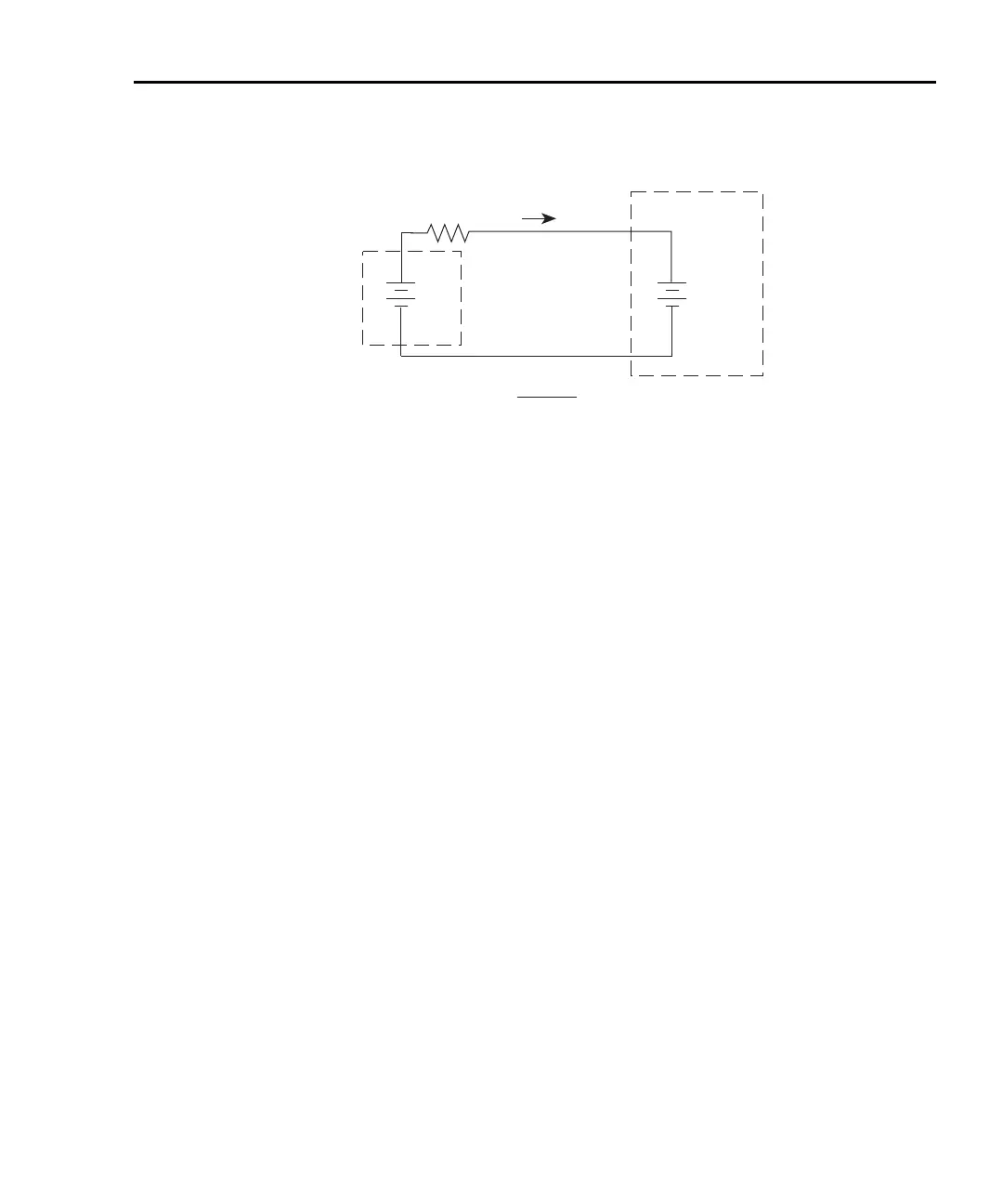Model 6487 Reference Manual Applications Guide G-5
Figure G-2
Voltage burden considerations
Noise and source impedance
Noise can seriously affect sensitive current measurements. The following paragraphs dis-
cuss how source resistance and input capacitance affect noise performance.
Source resistance
The source resistance of the DUT will affect the noise performance of current measure-
ments. As the source resistance is reduced, the noise gain of the picoammeter will
increase, as we will now discuss.
Figure G-3 shows a simplified model of the feedback picoammeter. R
S
and C
S
represent
the source resistance and source capacitance, V
S
is the source voltage, and V
NOISE
is the
noise voltage. Finally, R
F
and C
F
are the feedback resistance and capacitance respectively.
The source noise gain of the circuit can be given by the following equation:
Note that as R
S
decreases in value, the output noise increases. For example, when R
F
= R
S
,
the input noise is multiplied by a factor of two. Since decreasing the source resistance can
have a detrimental effect on noise performance, there are usually minimum recommended
source resistance values based on measurement range. Table G-1 summarizes minimum
recommended source resistance values for various measurement ranges. Note that the rec-
ommended source resistance varies by measurement range because the R
F
value also
depends on the measurement range.
R
s
V
s
I
M
=
R
S
V
S
- V
B
I
V
B
(Voltage
Burden)
+
-
+
-
6487
V-Source
Model of 6487 Picoammeter
Input Characteristics Before
Voltage Offset Correction
Output V
NOISE
Input V
NOISE
1R
F
/R
S
+()=
